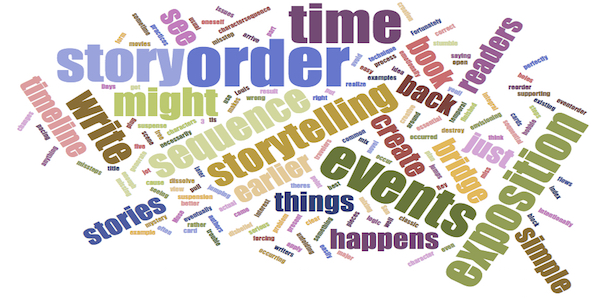
The order in which events unfold in a story is not necessarily the order in which those events occurred to the characters within the story.
In movies, for example, a story might open with a scene in the present, then put up a title card saying, “3 Days Earlier…” and dissolve back to an earlier time to see how things got to this point. As another example, in the classic book, The Bridge at San Louis Rey, five travelers arrive at a bridge at the same time, then the book jumps back to see how they all came to be there.
These are simple instances of a very common practice of jumping around in time in the storytelling to create suspense and generate interest and mystery for your readers. The problem is that mixing up the sequence of events makes it very easy for you, as author, to accidentally leave out essential pieces of the linear logic of the timeline.
When this happens, readers eventually realize that there’s something wrong with the actual order of events, and if it is a serious enough gap it can destroy the readers’ suspension of disbelief and pull them right out of the story emotionally.
You might think, then, it would be a better idea to just write things in their actual order and then mix them up for storytelling later. But, authors often create best when envisioning their stories in the order they plan on unfolding them. Exposition is an integral part of the creative process and forcing oneself to write only in sequential order might very well hobble the Muse and result in writers block.
Fortunately, there is a simple technique you can use to avoid temporal mis-steps than can cause your story to stumble, while still supporting the free form creation of stories in exposition order.
First write your story as usual, then jot down all the major events in your story on index cards in the order they are revealed. Next, rearrange the cards to put the events in character time, rather than exposition time. Finally, follow the order of events to see if you have left out any crucial steps .
With this clear view of the event-order timeline, you can easily find and plug any holes and correct any pacing issues and then apply those changes to your existing storytelling order so that it all flows perfectly in both the character-sequence and the exposition sequence.

